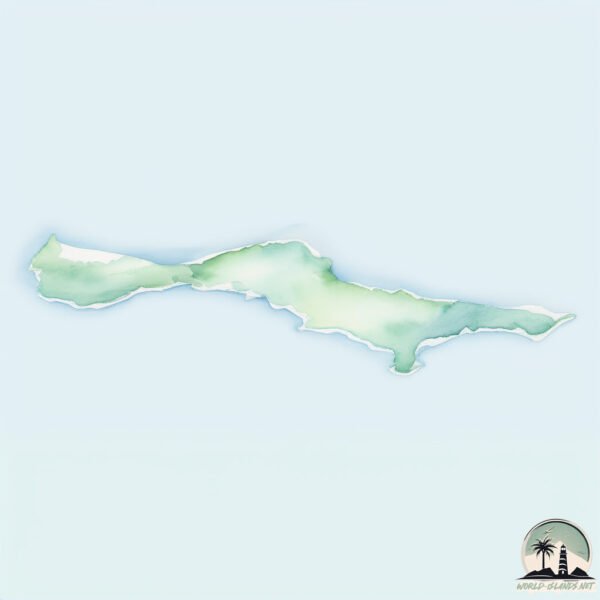St. Lawrence

Welcome to St. Lawrence, a Polar island in the Bering Sea, part of the majestic Pacific Ocean. This guide offers a comprehensive overview of what makes St. Lawrence unique – from its geography and climate to its population, infrastructure, and beyond. Dive into the details:
- Geography and Size: Explore the island’s size and location.
- Climate and Weather: Weather patterns and temperature.
- Topography and Nature: Uncover the natural wonders of the island.
- Infrastructure and Travelling: Insights on reaching, staying, and making the most of your visit.
- News and Headlines: Latest News.
Geography and size of St. Lawrence
Size: 4594 km²
Coastline: 1501 km
Ocean: Pacific Ocean
Sea: Bering Sea
Continent: North America
St. Lawrence is a Very Large Island spanning 4594 km² with a coastline of 1501 km.
Archipel: Bering Sea Islands – Situated in the Bering Sea, these islands are known for their unique ecosystems and as critical habitats for a variety of wildlife.
Tectonic Plate: North America – Covers North America and parts of the Atlantic and Arctic Oceans, characterized by diverse geological features and varying levels of seismic activity.
The geographic heart of the island is pinpointed at these coordinates:
Latitude: 63.39248764 / Longitude: -170.34570319
Climate and weather of St. Lawrence
Climate Zone: Polar
Climate Details: Tundra
Temperature: Cold
Climate Characteristics: The tundra climate features long, extremely cold winters and short, cool summers. Vegetation is limited to mosses, lichens, and small shrubs due to the low temperatures and short growing seasons. Biodiversity is low, but some specialized species thrive.
Topography and nature of St. Lawrence
Timezone: UTC-09:00
Timezone places: America/Anchorage
Max. Elevation: 593 m
Mean Elevation: 76 m
Vegetation: Herbaceous Cover
Tree Coverage: 10%
The mean elevation is 76 m. The highest elevation on the island reaches approximately 593 meters above sea level. The island is characterized by Plateau: Elevated flatlands rising sharply above the surrounding area, with a maximum elevation over 500 meters but a mean elevation less than 300 meters, forming unique highland areas on islands.
Dominating Vegetation: Herbaceous Cover
Comprising mainly of grasses, herbs, and ferns, these areas are common in prairies, meadows, and savannas, and can vary widely in species composition. St. Lawrence has a tree cover of 10 %.
Vegetation: 9 vegetation zones – Very Highly Diverse Island
Islands in this range are ecological powerhouses, showcasing a wide array of vegetation zones. Each zone, from lush rainforests to arid scrublands, coastal mangroves to mountainous regions, contributes to a complex and interdependent ecosystem. These islands are often hotspots of biodiversity, supporting numerous species and intricate ecological processes.
Infrastructure and Travelling to St. Lawrence
Does the island have a public airport? no.
There is no public and scheduled airport on St. Lawrence. The nearest airport is Wales Airport, located 267 km away.
Does the island have a major port? yes.
St. Lawrence is home to a major port. The following ports are situated on the island: SAVOONGA.
The mean population of St. Lawrence is 0 per km². St. Lawrence is Uninhabited. The island belongs to United States of America.
The name of the island resonates across different cultures and languages. Here is how it is known around the world: Arabic: جزيرة سانت لورانس; German: Sankt-Lorenz-Insel; Spanish: Isla San Lorenzo; French: île Saint-Laurent; Portuguese: Ilha de São Lourenço; Russian: Остров Святого Лаврентия; Chinese: 聖勞倫斯島
Continuing your journey, Arakemchechen is the next notable island, situated merely km away.
Alaska's Native-Owned Island (need permission to enter) 🇺🇸



United States of America is classified as Developed region: G7: Group of Seven – Major advanced economies, including Canada, France, Germany, Italy, Japan, the United Kingdom, and the United States. The level of income is High income: OECD.
News – Latest Updates and Headlines from St. Lawrence
Stay informed with the most recent news and important headlines from St. Lawrence. Here’s a roundup of the latest developments.
Social Media Posts about St. Lawrence
Please note: The data used here has been primarily extracted from satellite readings. Deviations from exact values may occur, particularly regarding the height of elevations and population density. Land area and coastline measurements refer to average values at mean high tide.
